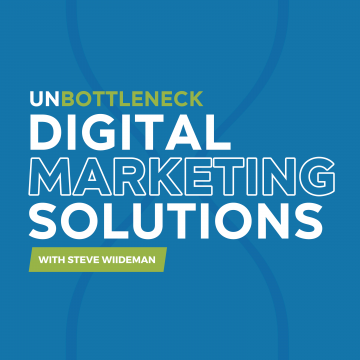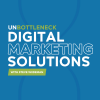For years now, so-called SEO experts have been preaching a rhetoric of “Content is King” philosophy, backed by little substance, few or no examples, and without reference to analytic reports. Grassroots search engine optimization involved website optimization, which later became the poor stepchild of modern day SEO after years of over-analyzing ranking signals. I believe that content is not king. What is king and will continue to be the primary driver of long term SEO success involves the following:
- Webpage and Website Performance (Not-So-Secret Code)
- Convincing Landing Pages for “Intent Content”
- Useful Landing Pages for “Interest Content”
- Outreach Capabilities & Response Rate Optimization
Content Vs Code
The difference between content and code was first explained to me in 1998 when I was a webmaster with a talent for creating over-sized buttons with 90’s style bevel and emboss features (okay, and possibly some annoying animation too).
Content is anything displayed to the user in their web browser. Code is anything within < tags > not displayed to user. Simple, right?
For the greater part of the 2000 era, we as webmasters (website optimizers) focused on code structure and website-level performance focal points; later injecting our keywords into the framework and earning top placement in MSN (now Bing.com) in a matter of weeks. Once we placed #1, we knew that all that would be required to earn the same position in Google was links, since links were Larry Page’s legacy PageRank scoring system.
Enter “content is king”. Since nobody will link to awful content (at least not naturally or without an incentive), webmasters have become obsessed with forcing business owners to deliver writing and digital media that go beyond the scope of what a typical business owner could possibly create themselves. In fact, the last quinquennium or so we’ve become convinced that it’s this keyword content that’s required to beat Google updates such as May Day, Panda and Penguin.
Intent Content Vs Interest Content
I challenge you to break your content into 2 types: Intent & Interest. Your intent content is fundamental to your on-page SEO strategy. For retailers, these are your category and product detail pages. For lead gen, these pages are the services and/or specialist pages that convert visitors into customers, but also have a main keyword theme (like “SEO Expert”).
NOTE: Your web design company should not be charging you extra for fundamental best practices – there is no extra effort required to apply SEO best practices.
Analyze your competitors’ versions of your pages and make yours more convincing (sit in on a sales call with your best rep), but also make sure you’ve thought about the following website-level elements, which may make all the difference:
- Page title and description are unique and use title tag principles, while insuring that they fit in the SERPS without truncation
- Using only one h1 tag per page with a main topic/theme in mind
- Your code does not need to use valid CSS3 or HTML5, but it does help insure cross-browser and cross-device compatibility and should at least be considered.
- Webpages should look great on any browser, but a mobile (tap-friendly) version will be the absolute best experience to Smartphone users (nearly 20% of all searches are done on mobile devices now)
- Using a Content Delivery Network (such as MaxCDN) will significantly optimize files and download times.
- Performance matters. If it didn’t, why would Google create PageSpeed tools? WebpageTest.org uses this tool to give you an quick way to test your webpages.
- Your pages should be structured like a college essay, with a strong title, short heading, main thesis/first paragraph, sub-topics (subheadings), examples, bullet/numbered lists, images and video (as applicable) along with links to additional resources, references, and similar content the reader might be interested in.
- Check for broken links and images, along with alt and height/width attributes for accessibility & performance improvement.
- Verify that your content is unique by copying a line of text from the page and pasting it into Google within quotes.
- Include a site map for users (rich in keywords that define the content) and a site map for search engines (XML)
I could go on forever, but nowhere above do you see anything that requires a cost on your end, just your time or the time of an intern (or bored receptionist). Intent keywords aren’t difficult to rank for within most search engines if your site scores well with all the tools mentioned above.
Interest Content for Links
Link-building by name alone defies Google’s Webmaster Guidelines, as they want to score your webpages based on other peoples’ opinions (links and mentions), not based on something you do to purposefully gain rank. For years, I considered myself a white hat SEO when in reality my effort in and of itself could have been considered manipulative.
Jim Boykin, the genius behind Internet Marketing Ninjas, and I share similar opinions on the value of interest content. If your intent content passes the tests above and is more convincing than that of your competition’s content, your internal linking structure (intra-linking) should kick-in and pass all the PageRank you’ll need to secure top positions.
However, that PageRank has to originate from somewhere on your website; not likely an intent page (who links to a product detail page, right?).
Enter “interest content”. By writing 4-20 useful pages of content on your website per month, you not only allow yourself to be found for additional relevant queries (improving relevancy may be a ranking signal), but you may also draw the attention of people who like to link to useful content.
Here’s where I either become one of those horrible SEO experts or actually deliver the goods. Let’s go with the latter.
How to Create Useful Content
- Find questions about your industry (I like Storybase.com’s question filter, but also use Quora, Yahoo! Answers and Askville for inspiration)
- Get quotes from other experts and industry leaders
- Gather facts, survey mTurk workers, and build pretty charts and graphs
- Use Google Related Searches to find psuedo-semantic terms to use within your article
- Throw a video together for people who simply don’t have the time to read a long piece of content (like this page)
- Get creative
- Avoid mentioning your company or selling your product or service (you may even get a competitor to link to the page)
It may take you 4-6 hours to write content worthy enough to be called “useful content” with the hopes of drawing interest.
Using Outreach to Earn Links
So here’s the controversial connector between your awesome content and Google rewarding PageRank to links, mentions, and quotes from such content: outreach. Asking for links to game rank is considered spam.
That being said, sharing your content, asking for feedback, and thanking contributors you may have quoted during the research phase is not at all considered spam, it’s considered marketing. Which brings us to yet more content you have to create: your outreach templates. I prefer Buzzstream as a CRM to keep organized with relationship building and outreach stages; it’s also a great place to store and manage your templates.
A hero of mine, Neil Patel, and I don’t quite see eye to eye on outreach. My approach is typically bland and upfront, where he likes to get a little fun and crazy. Here’s an example we used recently that has a reasonable response rate without coming off misleading or inappropriate:
Hi (insert name here),
I was just reading your article on (insert topic here) and have already shared it with several of our readers and in a tweet (@twitterhandle). Ironically enough, we have done some research on our end that would make for an awesome additional resource to your readers.
Here’s the page we put together on (insert topic here): (insert link here)
I can only imagine how busy you are, so I won’t be offended if mentioning our article is too much of a hassle. Please just let me know either way and have a fantastic day!
Warm regards,Thanks! (Suggested by Chris Kolmar of Movoto)
Your Real Name
Relationship Management SpecialistYour Real Business, Inc.
Address 1
Address 2
Phone:
Fax:
But who uses email anyway? You’re better off trying to find the page owner or blog author’s Twitter handle, Facebook page or LinkedIn profile and connecting through a direct message.
The Wrap-Up & Some Examples
As you can see, there is so much more to SEO than content alone. There’s code involved, sales involved (social, email, etc), and relationship management (CRM). Without these elements, longevity just isn’t sustainable. Obsessing over how amazing your intent content is or is not will get you nowhere. Just do your best on those pages and put your time and energy into your interest content.
Below are a few examples of pages that I thought were very well done:
- How to Store a Car
- How to Jump Start a Car Battery the Right Way
- How to Clean Your Shoes by Skechers
Did I miss anything? Please let me know what you think of my points above. Do you agree about content or do you still believe that some magical power is required to make a page of content into a million dollar webpage and that coding, outreach and CRM have nothing to do with SEO. I can take critism, so be honest please.
Until next time!




